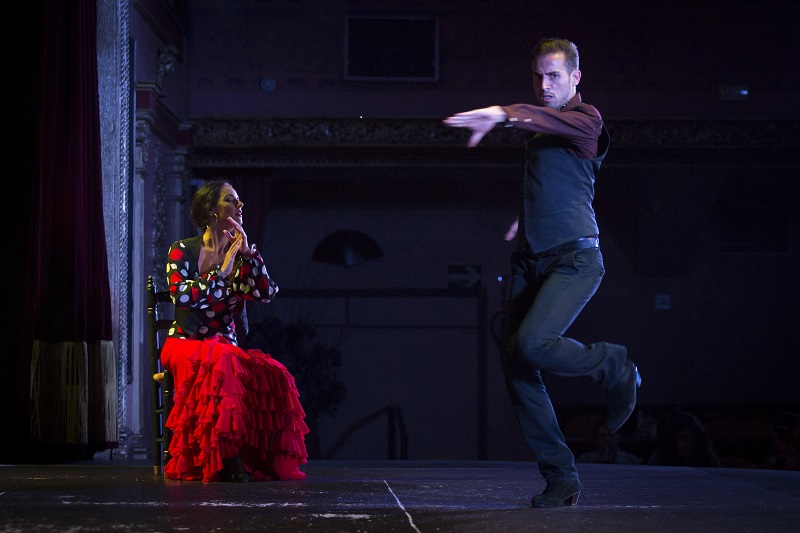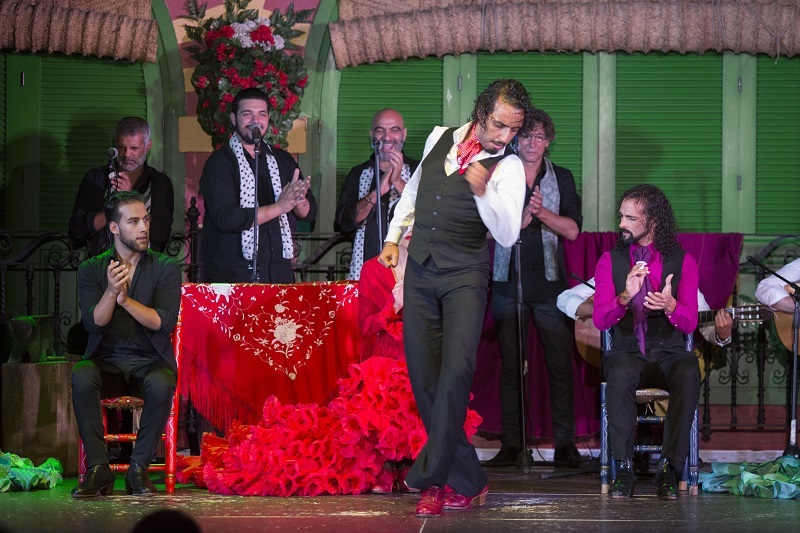
As we already commented in our post about the origin of flamenco, the majority of experts coincide in situating the birth of this art in the municipality of Jerez de la Frontera, in Cádiz, and that soon spread to other Andalusian cities such as Seville and Granada.
But, despite the fact that Andalusia continues to be the reference point for excellence in flamenco, the international reception of this phenomenon reaches countries such as France, Japan, Tokyo or New York.
Much of this international expansion is due to the explosion of numerous flamenco festivals, whose precursor is the Seville Flamenco Biennial, which first saw the light in 1980. Every two years, this event brings together dancers, singers and guitarists from the world of flamenco and in it live the purest flamenco as well as the new trends of this art, more experimental and risky.
We can mention other prominent festivals in Spanish territory, such as Jerez, the Malaga Biennial, La Union or the Flemish Summit of Murcia, but all of them have given rise to the fact that outside our borders these meetings are also held. numerous lovers of flamenco art, making it clear that flamenco is not an art that can only be enjoyed in tablaos or family events, but can also be oriented to large theaters that serve as a vehicle of international promotion to great artists.

Thus, one of the longest-lived is the London Flamenco Festival, which in 2018 has celebrated its 15th edition with the participation of established artists but also young promises. Among the shows offered we highlight those of Carmen Linares, Arcángel, Marina Heredia or Isabel Bayón.
Another of the most important international events is the Bienal de Flamenco de Amsterdam, a festival that was born in 2007 and where all flamenco styles are represented, including among the most innovative the fusion with other styles such as jazz, contemporary dance, Baroque music and also Indian and Oriental music.
Paris is one of the world capitals of flamenco, even ahead of many Spanish cities, thanks to the fact that it has many theaters and spaces for this type of shows. The most prominent festival is the Bienal of Flamenco Art of Paris, which was born in 2013.
Despite the shortness of its existence, this event attracts many fans from northern Europe but also brings to the public something more unfamiliar with this art because it is organized by the Chaillot Theater. This show, in addition to telling sober shows and more avant-garde proposals, also has exhibitions about the world of flamenco.
Paris also has the Festival de La Villette, held every two years and where in just 3 afternoons well-known artists gather to take this art to other places. Another appointment for French flamenco lovers is the Flamenco Art Festival of Mont-Marsan, in the south of the country, created in 1989 and lasting a week.
The festival has focused its main activities on the Café Cantante, which has served as the main stage for the performances of renowned flamenco figures such as Arcángel, José Mercé, Rocío Molina, Diego Amador and Juana Amaya. This festival offers attendees the possibility to enjoy shows and exhibitions in other parts of the city.
Outside the European continent we also have to highlight the International Flamenco Festival of Albuquerque, in Mexico. Each month of June for more than 30 years and with a duration of eight days, this city welcomes numerous artists in order to preserve and promote the flamenco tradition among national and international communities.
In addition to the performances, the Festival program includes interesting workshops and courses on dance, guitar, singing and percussion and a series of conferences with experts in this art to discuss the challenges that this tradition is currently facing.
But, as we said, Andalusia is still the cradle of this art and has multiple spaces in which flamenco can be enjoyed in capital letters, thanks to shows like the one held every night at El Palacio Andaluz.
In our tablao, there are two daily flamenco shows, at 7:00 p.m. and 9:30 p.m., which allow us to know the purest and most traditional styles of this universal art. If you visit Seville, do not hesitate to see a live show. At El Palacio Andaluz, you can make your reservation online and choose the day and time that best suits your interests.
© 2024 El Palacio Andaluz. All rights reserved.